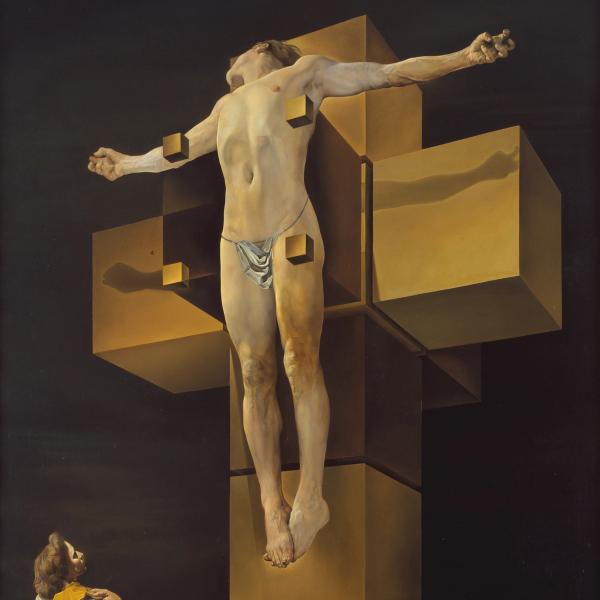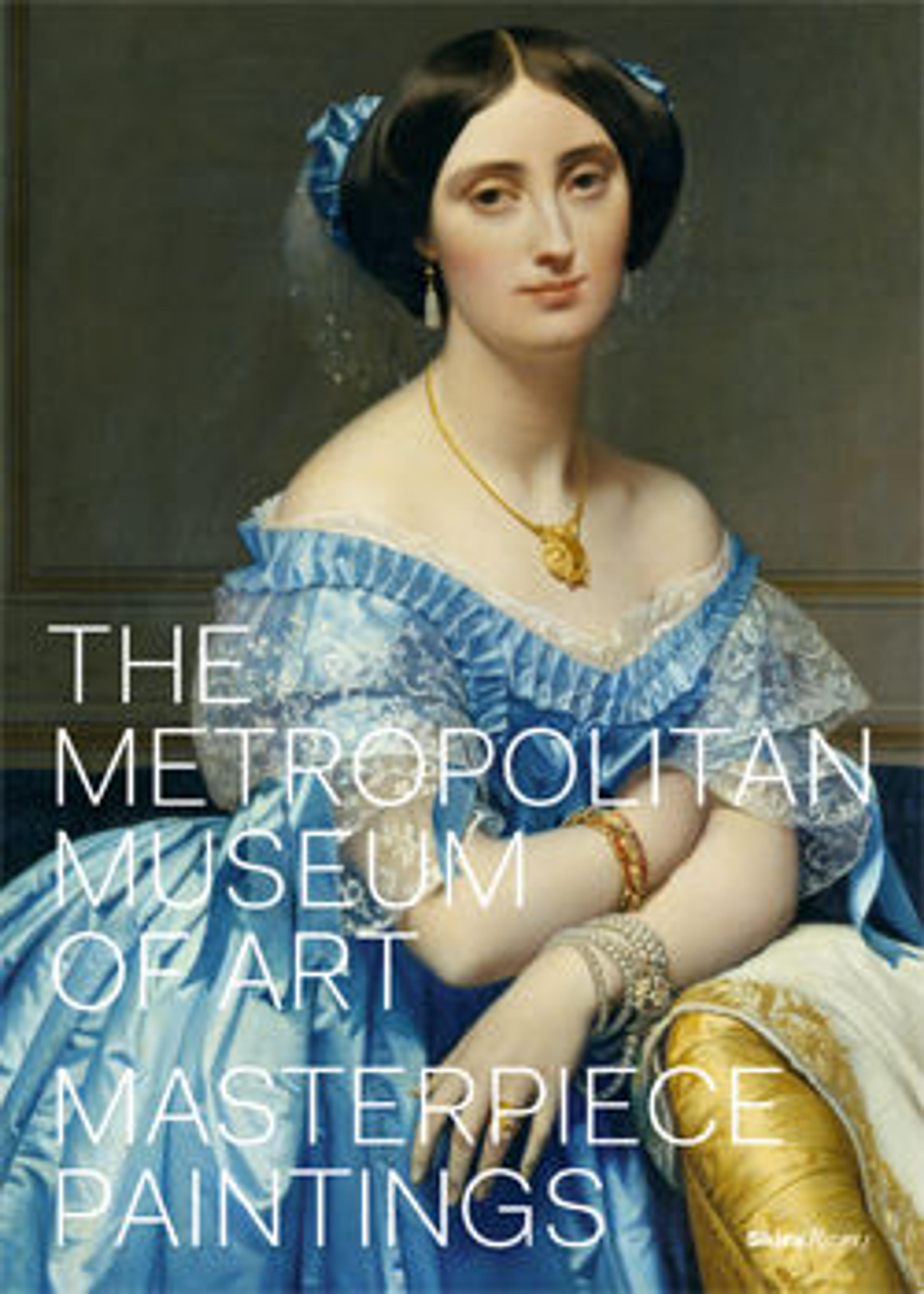Crucifixion (Corpus Hypercubus)
Dalí utilized his theory of "nuclear mysticism," a fusion of Catholicism, mathematics, and science, to create this unusual interpretation of Christ’s crucifixion. Levitating before a hypercube—a geometric, multidimensional form—Christ’s body is healthy, athletic, and bears no signs of torture; the crown of thorns and nails are missing. The artist’s wife, Gala, poses as a devotional figure, witnessing Christ’s spiritual triumph over corporeal harm. Several dreamlike elements from Dali’s earlier Surrealist work feature in this painting: a levitating figure, vast barren landscape, and chessboard.
Artwork Details
- Title: Crucifixion (Corpus Hypercubus)
- Artist: Salvador Dalí (Spanish, Figueres 1904–1989 Figueres)
- Date: 1954
- Medium: Oil on canvas
- Dimensions: 76 1/2 × 48 3/4 in. (194.3 × 123.8 cm)
- Classification: Paintings
- Credit Line: Gift of The Chester Dale Collection, 1955
- Object Number: 55.5
- Rights and Reproduction: © 2025 Artists Rights Society (ARS), New York
- Curatorial Department: Modern and Contemporary Art
Audio

After Crucifixion (Corpus Hypercubus)
Alex Dimitrov
0:00
0:00
We're sorry, the transcript for this audio track is not available at this time. Please email info@metmuseum.org to request a transcript for this track.
More Artwork
Research Resources
The Met provides unparalleled resources for research and welcomes an international community of students and scholars. The Met's Open Access API is where creators and researchers can connect to the The Met collection. Open Access data and public domain images are available for unrestricted commercial and noncommercial use without permission or fee.
To request images under copyright and other restrictions, please use this Image Request form.
Feedback
We continue to research and examine historical and cultural context for objects in The Met collection. If you have comments or questions about this object record, please contact us using the form below. The Museum looks forward to receiving your comments.
